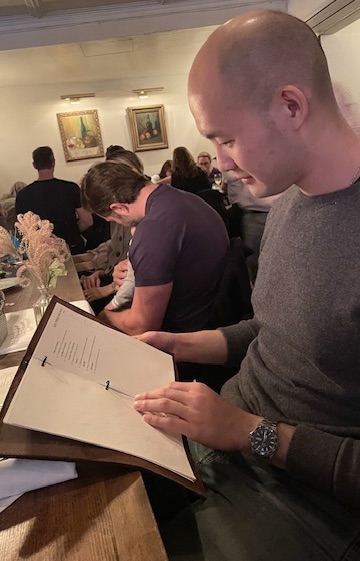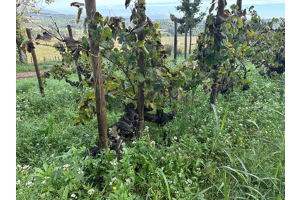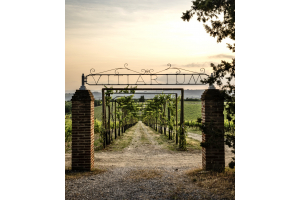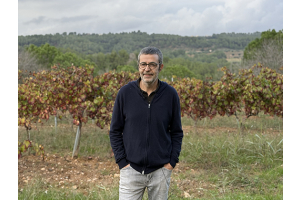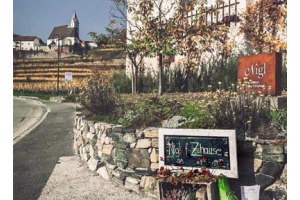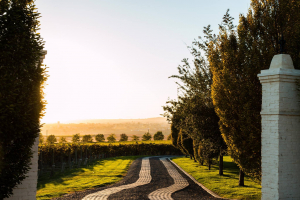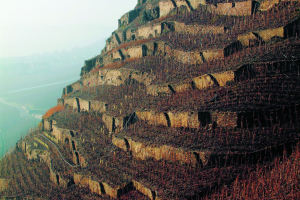
Something we often complain about is the price tags of wine. And it’s totally understandable - wine, on the surface, is just fermented grape juice bottled in a glass container. How hard can it be to consistently grow grapes, make wine, and sell to customers at a low price while still allowing the families who make the wines to earn a decent living?
This sort of reasoning is reasonable, because we are often exposed to only one side of winemaking – the wonderful scenery of the vineyards, the captivating stories and histories, the clean and grand wineries, and the neatly organized cellars and barrel rooms. What are less shared are the built-in challenges winemakers and growers face. The stories on the other side of the bottle may not be the most attractive or interesting, but they deserve to be heard nonetheless.
First of all, there are no shortcuts in fine wine.
All fine wines (in fact most wines) are produced only once a year. There is no way around it. That means it takes 365 days, give or take, to grow the grapes, harvest the grapes, vinify the grapes, age the resulting wine, and finally bottle the wine. In some regions, producers are even required by law to take longer than a year to produce a certain kind of wine; Notable examples include Brunello di Montalcino or Barolo from Italy, Rioja from Spain, and Champagne from France. There are even producers who voluntarily age wines, at great expense, beyond the minimum required time before release.
You can’t cut corners for fine wine by using sub-par material or forgoing a winemaker.
Fine wines are often produced meticulously. The pressing of grapes has to happen within a certain amount of time from picking. The fermenting of wine must be performed at a certain temperature, for a certain amount of time, at a certain temperature range. The equipment used to ferment and age the wine must be clean and in good condition. When a producer decides to use oak, it means oak barrels from reputable cooperages, new or used, not cheap oak chips. Most importantly, during every step of the winemaking process, it is up to the winemaker to assess and decide when to make adjustments in order to achieve the best possible result. Such adjustments are often based on the conditions of the grapes and the winemaker’s experience.
The quality of grapes can’t be improved by simply growing on more fertile soil or spraying more water.
Many winemakers claim that the quality of the grapes determine the quality of the wine. And the most ironic thing about grape growing is, the more they struggle to grow, the more suitable they are for fine wine. This means that vines are often grown on soil types that aren’t fertile at all – stone, sand, and clay. You won’t hear about the use of fertilizers for growing grapes either. The other challenge is having the right amount of water for vines. Too much water or rainfall, and the canopy (e.g. leaves) of the vines will grow too aggressively, diluting the nutrients meant for grapes, thus diluting the flavor. Too little water or rainfall, and the vine can be damaged or even die from drought.
Good vineyards are very hard to manage, and a lot of the best ones are planted on impossible terrains.
Combine poor soils with steep terrain in a region that offers the right climatic conditions and you have the potential for a great vineyard. Grapes that can produce fine wine require a lot of sun exposure during their growth cycle, and vineyards planted on sloping terrains are able to maximize the exposure towards all of the vines. The sloping terrain also provides excellent drainage to prevent the vines from absorbing too much water, providing greater flavor concentration to the grapes. The steepness required for great vineyards often result in conditions that are not suitable for machines, and winemakers / vineyard managers have to hike up and down such vineyards to inspect and manage the vines everyday (even more so when farming organically or biodynamically). Even the harvesting of grapes must be done by people instead of machines. That is why some winemakers emphasize that their wines are handpicked – it isn’t a choice, it is a necessity, and the reward is great. Notable examples of steep vineyards that are largely maintained by hand include Rhone Valley in France, Uco Valley in Argentina, Mosel in Germany, and Duoro in Portugal.
You also can’t easily increase a vineyard’s yield.
Actually, you technically can (techniques include fertilizers, irrigation, etc.), but that most likely means reduced quality of the grapes. Depending on where the vineyards are located and what type of varietals, growers around the world recognize that vineyards have an ideal yield range that result in better quality grapes. If the vines produce above or below that yield range, they can result in grapes with diluted flavor or underripe green notes respectively. Since growing conditions change every year and are very unpredictable, it takes incredible effort (and experience) for growers to determine the ideal yield for their vineyards to produce the best possible grapes each year. So, the industrial equation of simply increasing the volume of grapes to produce more fine wine to sell doesn’t quite work.
Finally, a vineyard takes time to produce good quality grapes.
As important as the soil or terroir can be, the quality and health of the vines are also vital to growing good grapes, and they cannot be achieved overnight. A vineyard planted with brand new vines can take three years to be able to produce its first grapes, but it might take an additional few years before the quality of the grapes are good enough for fine wine. It takes time for the vines’ roots to burrow deep enough to reach the necessary nutrients, and (as we alluded to earlier) an incredible amount of effort to manage the young vines. Grape vines can last a very long time when taken care of, sometimes over 100 years old, and end up producing intensely flavored grapes that make great wine. The tradeoff with older vines is that yields can be lower, and more importantly, they are more susceptible to disease, thus requiring more effort to maintain. That is why some winemakers emphasize the age of their vines on their labels – it signifies the quality of the wine and the backbreaking effort it took to make it!
This is obviously not an exhaustive list of the challenges of grape growing and winemaking, and I am certainly not trying to downplay the difficulties of growing other agricultural products. Agriculture is just hard. But, I hope to point out that the level of labor and craft for producing fine wine is very different from producing potato chips or American cheese. Wine may be a consumer good, but it isn’t a fast moving one.
Hopefully, we can all learn to appreciate this side of the bottle more.
